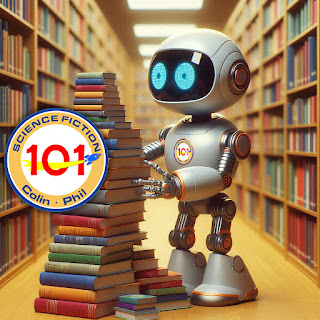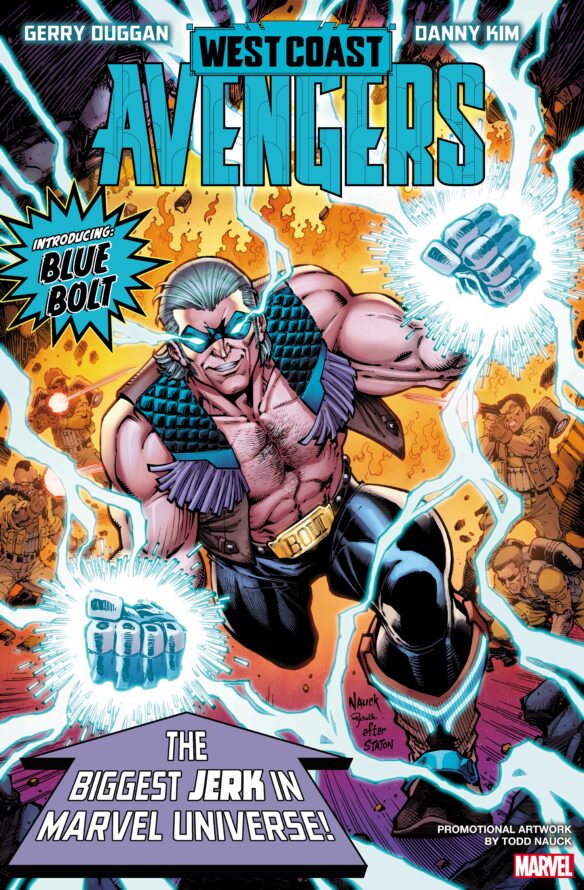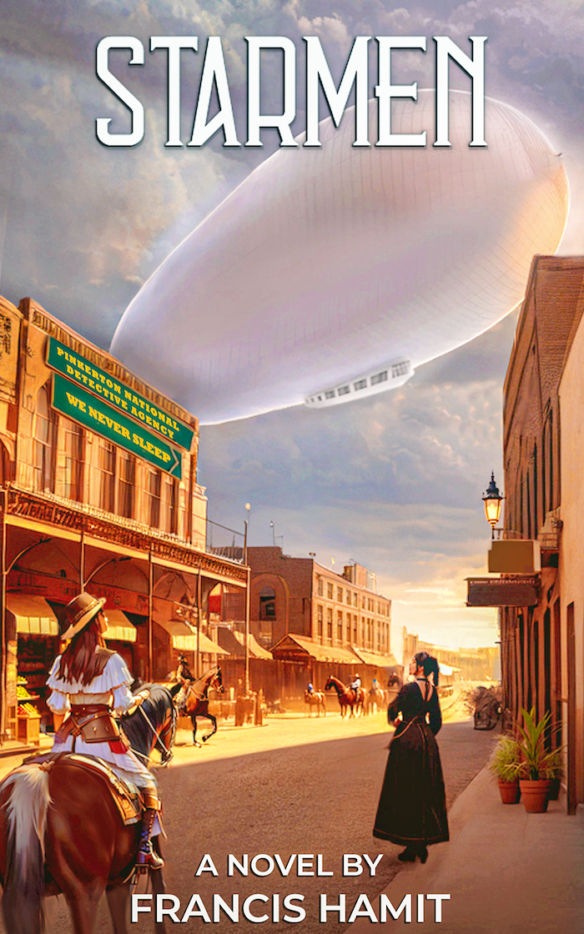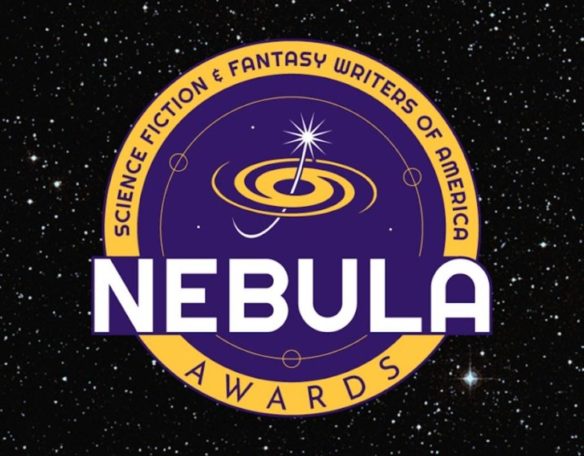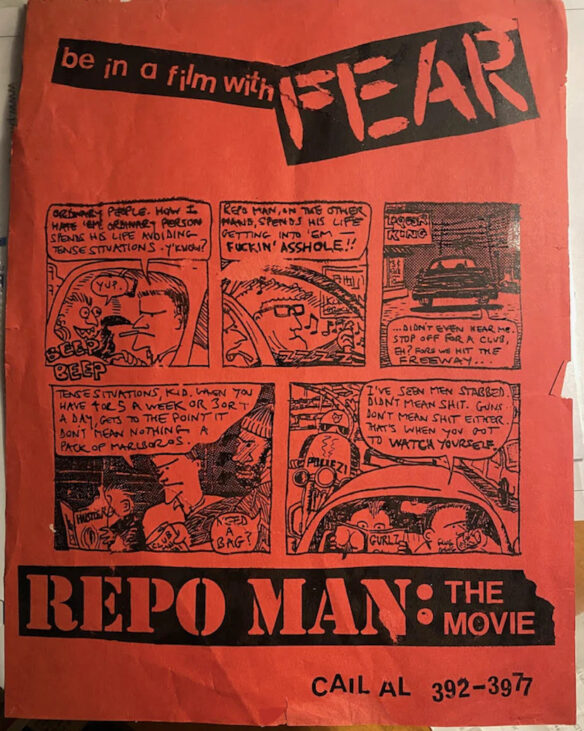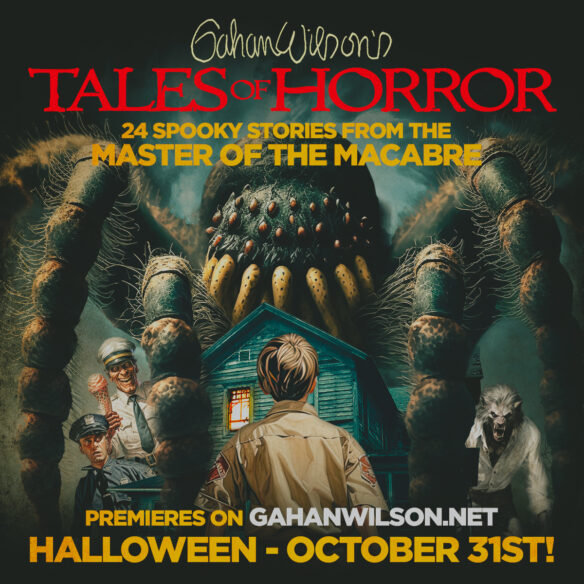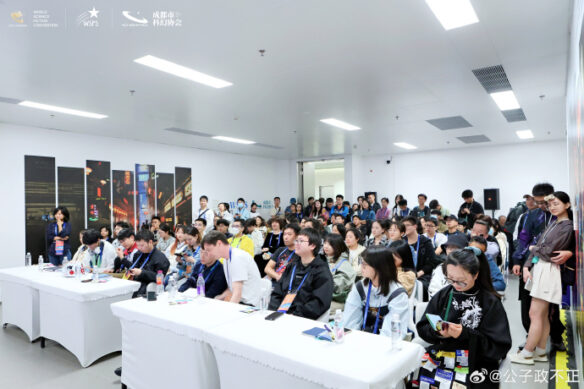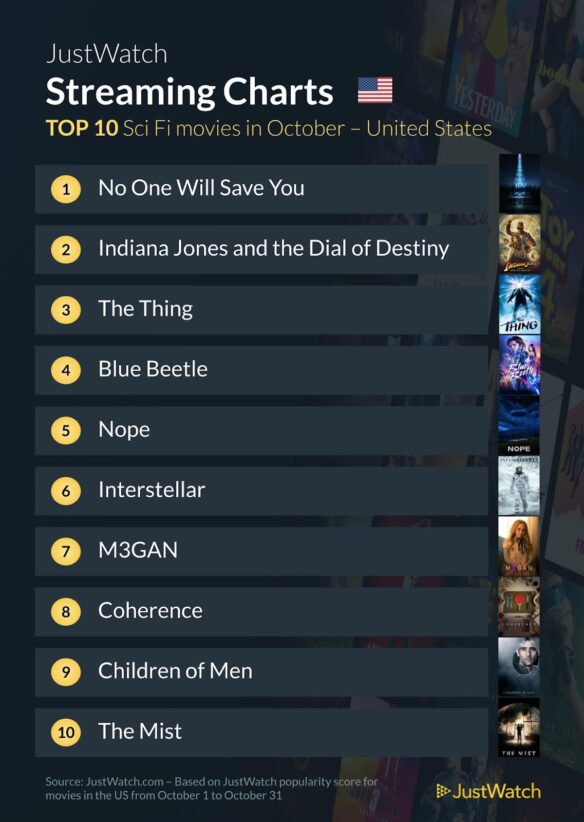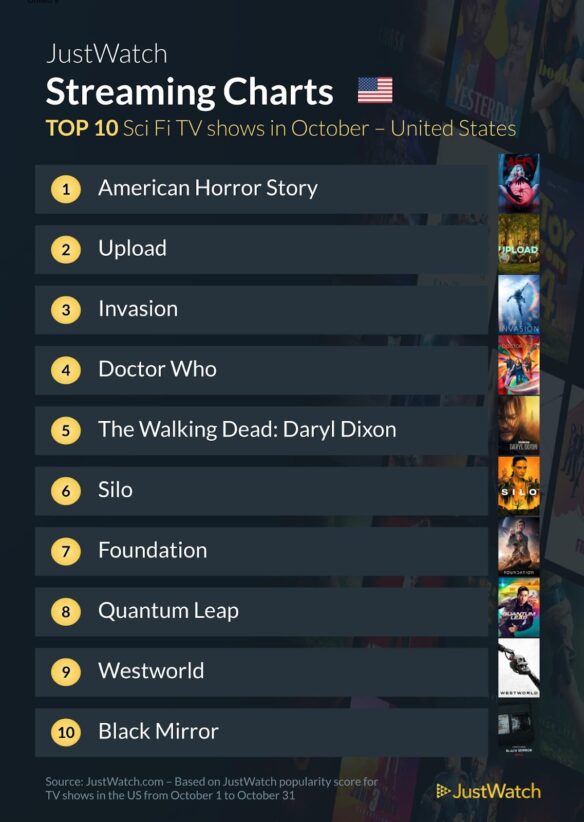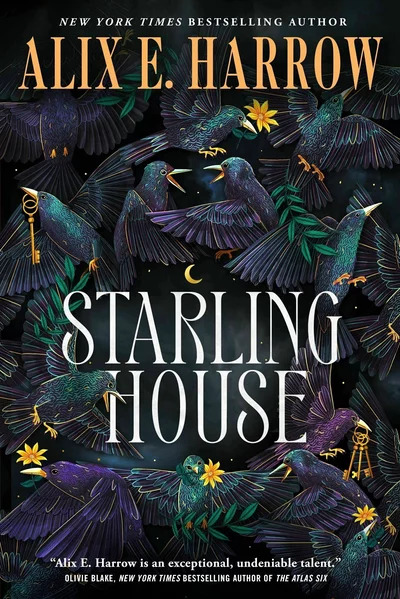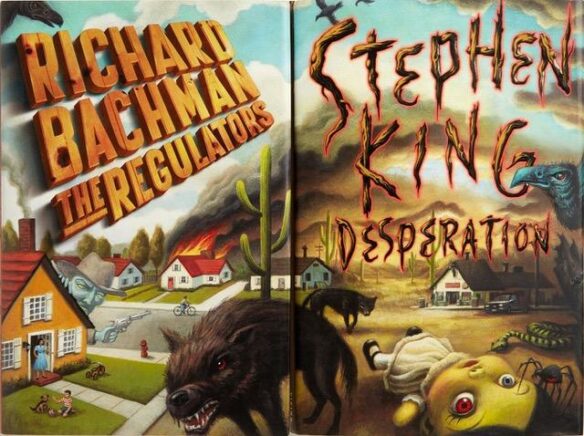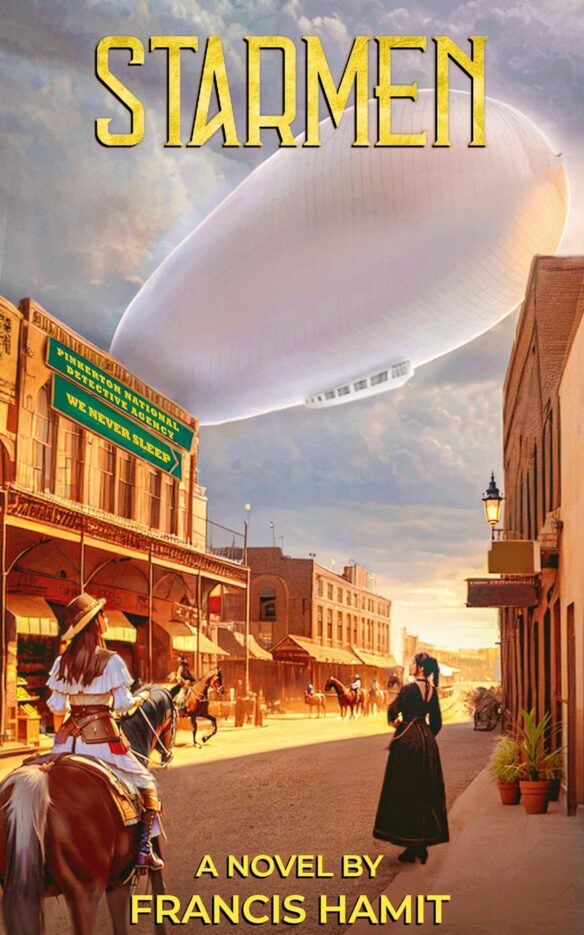(1) ATWOOD’S FREEDOM TO PUBLISH AWARD. The Guardian reports an award acceptance speech in which “Margaret Atwood says she cannot remember another time ‘when words themselves have felt under such threat’”.
Margaret Atwood has said she cannot remember another point in her lifetime “when words themselves have felt under such threat”.
“Words are our earliest human technology, like water they appear insubstantial, but like water they can generate tremendous power” the 85-year-old novelist said in her acceptance speech for the freedom to publish prize at the British Book awards.
“Political and religious polarisation, which appeared to be on the wane for parts of the 20th century, has increased alarmingly in the past decade,” she added. “The world feels to me more like the 1930s and 40s at present than it has in the intervening 80 years.”
The British Book awards, colloquially known as the Nibbies, are a set of prizes for authors, illustrators and book industry professionals run by the publishing trade magazine, The Bookseller. …
…Though Atwood did not attend the ceremony in London, she recorded a video acceptance speech to be shown when she was announced winner of the freedom to publish award, which is supported by freedom of expression campaign organisation Index on Censorship and was established in 2022 to “highlight the growing threats to writers, publishers and booksellers, and to amplify those who fight back”.
(2) FIGHTING BACK. “Jamie Lee Curtis just wanted an AI ad removed, not to become the ‘poster child of internet fakery’” – at the LA Times (behind a paywall).
Jamie Lee Curtis didn’t expect to be at the forefront of the artificial intelligence debate in Hollywood. But she didn’t have a choice.
The Oscar-winning actor recently called out Meta Chief Executive Mark Zuckerberg on social media, saying the company ignored her requests to take down a fake AI-generated advertisement on Instagram that had been on the platform for months.
The ad, which used footage from an interview Curtis gave to MSNBC about January’s Los Angeles area wildfires, manipulated her voice to make it appear that she was endorsing a dental product, Curtis said.
“I was not looking to become the poster child of internet fakery, and I’m certainly not the first,” Curtis told The Times by phone Tuesday morning.
The ad has since been removed.
What happened to Curtis is part of a larger issue actors are dealing with amid the rise of generative AI technology, which has allowed their images and voices to be altered in ways they haven’t authorized. Those changes can be wildly misleading….
(3) DOOR DRAGONS AT WORK. [Item by Mark Roth-Whitworth.] They told him, both of them, to Go Away. From NPR: “The President has named a new Acting Librarian of Congress. It’s his former defense lawyer.”
Todd Blanche, the Deputy Attorney General of the United States, has been appointed as the acting Librarian of Congress by President Trump, according to a spokesperson at the Department of Justice….
Blanche has no experience working in libraries or archives,…
An employee at the Librarian of Congress, who asked not to be identified for fear of retribution, said two men showed up this morning with a letter saying that Blanche was appointed the acting Librarian of Congress, Brian Nieves was appointed acting assistant librarian, and Paul Perkins was appointed the acting Register of Copyrights and Director of the Copyright Office. The men were not allowed into offices and left soon after, the employee said, adding that the Library of Congress is a legislative branch agency, and has not yet received direction from Congress on how to move forward….
Publishers Weekly offers more detail about the turnover: “U.S. Executive and Legislative Branches Battle at the LoC”.
Does the future of the free world come down to who oversees the Library of Congress? Events of the past five days suggest as much, with a pitched battle over who may serve as interim Librarian and strong words from the House of Representatives.
Librarian of Congress Carla Hayden was summarily fired, via email, late in the day on May 8. At the time of her removal, Hayden was serving a 10-year appointment that would have concluded in 2026, and her sudden ouster—without clear grounds for dismissal—was met with nationwide rage and disappointment from librarians, members of Congress, and the general public. Robert R. Newlen was named acting Librarian to replace Hayden, according to LoC seniority regulations and rules for succession.
Newlen has substantial experience in the agency, having worked at the Library of Congress from 1975–2017, and having been appointed (by Hayden) interim director of the Congressional Research Service in 2023. Newlen is a past member of the American Library Association executive board, a senior trustee of the ALA endowment, and 2016 recipient of the ALA Medal of Excellence.
One of Newlen’s first official acts as Librarian was to inform staff that the register of copyrights and director of the U.S. Copyright Office, Shira Perlmutter, had been fired Saturday, May 10. Perlmutter, also appointed by Hayden, had served in the role since 2020. The Copyright Office is housed in the Library of Congress and likewise belongs to the U.S. legislative branch, and the director is appointed to the post by the Librarian. As of May 12, no new acting director had been identified.
Newlen served for all of one weekend before the Trump administration attempted to remove him too. The New York Times reported that deputy attorney general Todd Blanche—already in a prominent Department of Justice role—had been named acting Librarian on May 12, and immediately thereafter was embroiled in a standoff with Newlen. Politico broke the news that Newlen “disputed a change that had been made in an email to library staff Monday morning” and did not cede the role to Blanche, calling for Congress and not the executive branch to direct the process….
(4) EARLY RETURNS ON MURDERBOT. “’Murderbot’ Review: Apple’s New Comedy Sci-Fi Is A Great Vehicle For Alexander Skarsgard, But Not Without Its Problems” at Forbes. Beware mild spoilers.
…The most endearing thing about Murderbot is it’s / his (nobody quite knows how to refer to SecUnit when it comes to pronouns, a running gag) obsession with The Rise and Fall of Sanctuary Moon, which is basically the show you’d get if Star Trek and Days Of Our Lives had a lovechild. The show has 2,797 episodes and we get little glimpses of them in action because Murderbot spends every waking moment glued to his entertainment feed, and is annoyed when pesky humans and their problems get in the way…
- “Alexander Skarsgård and cast of Murderbot TEASE what to expect from All Systems Red adaptation” – this 14-minute Radio Times compiles a lot of Q&A moments previously linked here. But they may be news to you!
(5) PAGERTURNERS. “People who prefer physical books over ebooks usually display these 7 behaviors, says psychology” – Global English Editing has the story. First on the list:
1) They value the sensory experience
You see, for physical book lovers, reading is more than just deciphering words. It’s a sensory affair.
The smell of the paper, especially in a new book fresh off the shelf or an old one rich with history, is intoxicating to them.
The tactile stimulation of flipping through pages, feeling the texture under their fingertips, provides a satisfaction that swiping on a screen simply can’t match.
And there’s something about hearing the gentle rustle of pages turning or seeing your progress as you slowly traverse from the right side of the book to the left that makes reading a physical book uniquely rewarding.
It’s this immersive, multi-sensory experience that often keeps them loyal to traditional books, despite the convenience of digital alternatives. So if you’re someone who relishes these sensory delights, it’s safe to say you might be a physical book lover at heart….
(6) LACON V RATES TO INCREASE. Memberships in the 2026 Worldcon will cost more on June 15.
LAcon V membership rates go up on June 15th!
Right now, full attending adult memberships are $200 and will increase to $230. (All other memberships will remain the same price for now.) Our installment plan is also currently available for full adult attending memberships!
Visit the registration page on the website to get your membership before prices go up: https://www.lacon.org/register
Take advantage of the installment plan right now: https://www.lacon.org/2025/05/10/installmentplan
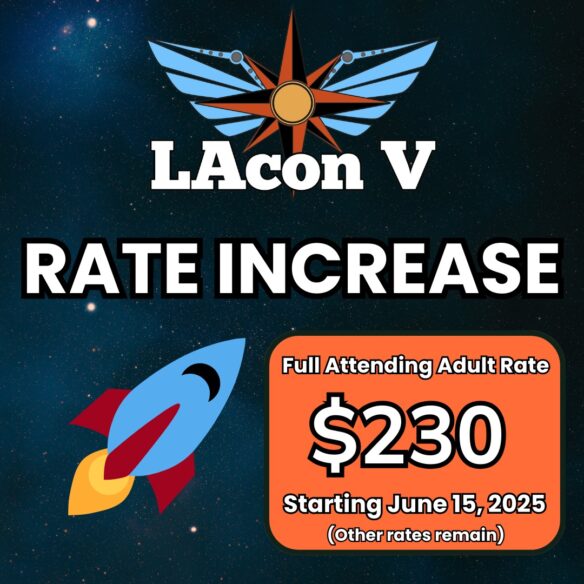
(7) CANARY IN THE COALMINE: USING “VIRTUAL VOICE”. [Item by Francis Hamit.] This link is for my new audiobook It is a test. https://a.co/d/07HmIQf
I am coming up on the 60th anniversary of matriculating at University of Iowa in Iowa City. I was originally a Drama major but between then and when I left to join the US Army Security Agency in 1967 several events occurred that changed my life. I discovered writing and my true vocation. Despite a history of D+’s in English it turned out I could write. I’m dyslexic but I could hear the music. Perhaps it was all of those plays I was in. I went from a Basic Playwrighting class to the Undergraduate Writers Workshop. During those two years, as the Vietnam War heated up, I saw the first draft card burning, indulged in nude photography (them not me) and took up undercover anti-narcotics work.
About ten years ago I wrote a short memoir about all of it, The Perfect Spy, which did not get much traction there because no one would review it. It was too shocking. No one wanted to know that their parents or grandparents actually did “sex, drugs, and rock and roll”.
Kirkus gave me a very nice review.
And now, out of nowhere, Amazon has offered me a “virtual voice” audiobook. It’s not the robotic voice they used to have but AI enhanced. Actually sounds human and had features that allow for variations in pace. Google gave me something similar for Starmen but it was a long slog and the voice selection was not great. Amazon’s voice are IMO better and easier to work with. And this is probably the future in small press conversions. When we did The Shenandoah Spy in 2008 I did a 50-50 deal with Gail Shalan on ACX. That was 40 hours of trial and error for both of us and practically no sales. It was great for Gail. She went on to become an audiobook superstar. I can’t afford her now but I’m very proud of having given her that first chance.
I think Virtual Voice may be my solution. No one reads anymore. Audiobooks are a big chunk of the market and Amazon controls the price to a narrow range. I am hoping that some people will find my adventures as a young man in Iowa worth listening to. Sixty years is not that long ago.
If you want a science fiction connection, Nicholas Meyer was a classmate. I had a couple of things to say about him too.
(8) LET’S DO THE TIME LORD AGAIN. “Your Name Engraved in Circular Gallifreyan – Metal, Glow Reactive Paint. Doctor Who Cosplay. Prop Replica. Game Piece. Geek Gift. Pin Badge.”
Solid metal disc with your name translated into Circular Gallifreyan, then laser engraved and filled with Ultra Violet reactive paint. We can engrave this in Copper, Brass, Stainless Steel or Aluminium. If you want a different size metal than the options listed, please message us and we can help 🙂 We’ve also got a Titanium listing of this in our store, see the “Sci-Fi” section.

You can use this link to translate into Gallifreyan: https://adrian17.github.io/Gallifreyan/. I thought “That could be fun” and checked it out. They tell me this is how File 770 reads in that language.

(9) MEMORY LANE.
[Written by Cat Eldridge.]
May 13, 1994 — The Crow
Thirty-one years ago on the evening, The Crow premiered. I saw it at the theatre and yes, I liked it quite a bit. I’m not a horror fan but I found this quite impressive. I hadn’t realized until now that it was co-written by John Shirley along with David J. Schow but I’ll get back to that in awhile.
It was directed by Alex Proyas who would later be nominated for a Hugo at Aussiecon Three (1999) for Dark City. (The Truman Show won that year.) And he’d also later direct I, Robot.
The Crow was produced by Jeff Most, Edward R. Pressman and Grant Hill. Most would produce the sequels, The Crow: City of Angels, The Crow: Salvation and The Crow: Wicked Prayer. Pressman was the uncredited executive producer for Conan the Destroyer and Grant Hill was involved in the Matrix films plus V for Vendetta.
Of course, the movie starred Brandon Lee, an actor who gave the film a certain tragic edge by dying.
The other major roles were held by Ernie Hudson and Michael Wincott. Ernie you know, but Michael Wincott has largely played villains in such films as Alien Resurrection and The Three Musketeers (remember I hold them to be genre).
It was written by John Shirley along with David J. Schow (lots of forgettable horror in my opinion other than this). Checking IMDB, I see Shirley has written far too many screenplays too list all of them here, so I’ll just note his work on Deep Space Nine, Batman Beyond and Poltergeist: The Legacy. Though definitely not genre, he also wrote one episode of the IMDb Red Shoe Diaries. Really he did.
His Red Shoes Diaries episode? IMDb says it was, “A beautiful astronaut, trapped in a dying spacecraft a million miles from home, makes tender love for the last time with her co-pilot as she ruminates about the sensual path of her life that led her to the adventure of outer space.”
(The only continuing role in the Wikipedia Red Shoe Diaries was Jake Winters played by David Duchovny in his first true ongoing role as it ran sixty episodes. The framing device is him as a narrator with a back story to explain why he’s introducing and offering closing commentary on these stories. Serling he ain’t though. Yes I did see a few when they originally aired back in the Nineties on Showtime. Softcore would be putting it mildly to describe them.)
The Crow did well at the box office making nearly a hundred million against twenty-four million in costs. it spawned a franchise of sorts as it has three sequels, (The Crow: City of Angels, The Crow: Salvation and The Crow: Wicked Prayer) plus a reboot last year, The Crow, which also based off the 1989 comic book series by James O’Barr.
So what did the critics think?
Michael Wilmington of the Chicago Tribune had this to say: “What’s scary about The Crow is the story and the style itself: American Gothic, Poe-haunted nightmare, translated to the age of cyberpunk science fiction, revenge movies and outlaw rock ‘n’ roll, all set in a hideously decaying, crime-ridden urban hell.”
Caryn James of the New York Times was impressed though not as ecstatic: “It is a dark, lurid revenge fantasy and not the breakthrough, star-making movie some people have claimed. But it is a genre film of a high order, stylish and smooth.”
It holds a most exemplary ninety percent rating among audience reviewers at Rotten Tomatoes.
The only place it’s streaming is on Pluto with ads. No, just no.
Yes, there are copies of it on YouTube. As always, any links to those will be deleted with extreme prejudice as it is very much under copyright. Really they will.

(10) COMICS SECTION.
- xkcd sets a trap.
- Bizarro works without a mirror.
- Brilliant Mind of Edison Lee gives a convincing reason for predicting a Mars landing.
- Mutts’ pick backfires at the book club.
- Wumo has seen this act before.
(11) CALL FOR CONTRIBUTIONS TO STERANKO HISTORY OF COMICS. The Official Steranko Fan Page on Facebook has put out a “Call for Contributions to the Steranko History of Comics, Volume 3 and Updated Editions!”

Comic art fans, collectors, and historians: We are thrilled to announce that Jim Steranko is working on Volume 3 of the acclaimed Steranko History of Comics. As Special Advisor to this project, I’m excited to share that Volumes 1 and 2 will also be updated with new supplemental material, and all three volumes are planned to be published in full color.
We are seeking contributions of rare and original materials related to the Golden Age of Comics, including documents, original covers, photos, color comps, special pages, presentations, character/costume designs, and unpublished images. As with the original Volumes 1 and 2, the focus is on bold, iconic graphics and behind-the-scenes editorial or biographical content of historical significance. Interior panel pages are a lower priority unless they hold unique importance.
If you have art, photos, correspondence, or documents that could enhance this project, your contribution could earn you a contributor credit, a complimentary copy of the book, the benefits of having your material featured in this landmark publication, and Jim’s personal gratitude.
To ensure we reach collectors and fans with access to such materials, please share this call widely within your networks. If YOU have relevant items, contact me directly via Direct Message with a description or a low-resolution scan/photo. If it’s a potential fit, I’ll provide instructions for submitting a high-resolution (minimum 300dpi, full-color) scan to Jim Steranko.
Join us in shaping comics history with the Steranko History of Comics!
(12) FOR SOME VALUES OF FIRST. Inverse remembers:“90 Years Ago, A Forgotten Horror Movie Beat A Monster-Movie Classic To The Punch”.
Although it was technically not the first werewolf movie (that honor goes to the long-lost and now forgotten 1913 short, The Werewolf), Werewolf of London was the first feature-length motion picture in cinema history to deal with the subject of lycanthropy (or “lycanthrophobia,” as it’s called in the film itself). Produced by Universal Pictures, the film starred Henry Hull as Dr. Wilfred Glendon, a world-famous British botanist (apparently botanists could be celebrities back in the day) who ventures into Tibet to find a rare flower, Mariphasa lumina lupina, that allegedly can blossom in moonlight. He does find the flower, but brings home something much worse.
While procuring three sample buds, Glendon is attacked and bitten by an animalistic humanoid creature. He makes it home and creates an artificial source of moonlight in his lab in order to make Mariphasa bloom, after which he’s approached by Dr. Yogami (Warren Oland, creepy), a fellow botanist who claims they met in Tibet. Indeed they did: Yogami was the creature that attacked Glendon, and claims that Glendon will turn into a werewolf himself thanks to Yogami’s bite — unless the plant, which can keep lycanthrophobia in check, blooms successfully….
… Werewolf of London was originally conceived as a vehicle for horror icons Boris Karloff and Bela Lugosi, with the former tagged to play Glendon and the latter cast as Yogami. That would have been a blockbuster combination, but Karloff was already committed to filming Bride of Frankenstein and the studio was hesitant to muck around with that movie’s schedule (Valerie Hobson appeared in both films, incidentally, playing Dr. Frankenstein’s wife in Bride)….
(13) NO DEPOSIT, NO RETURN. “Trump’s 2026 budget plan would cancel NASA’s Mars Sample Return mission. Experts say that’s a ‘major step back’” reports Space.com.
NASA’s Perseverance Mars rover has been on the prowl within Jezero Crater following its touchdown in February 2021. That car-sized robot has been devotedly picking up select specimens from across the area, gingerly deploying those sealed pick-me-ups on the Red Planet’s surface, as well as stuffing them inside itself. Those collectibles may well hold signs of past life on that enigmatic, dusty and foreboding world.
NASA and the European Space Agency (ESA) have for years been intently plotting out plans to send future spacecraft to Mars and haul those Perseverance-plucked bits, pieces, and sniffs of atmosphere to Earth for rigorous inspection by state-of-the-art equipment.
But President Trump’s Fiscal Year 2026 proposed budget blueprint issued on May 2 by the Office of Management and Budget (OMB) calls for a 24.3 percent reduction to NASA’s top-line funding and could slashing the space agency’s science budget by 47 percent. A casualty stemming from this projected budget bombshell is the Mars Sample Return (MSR) venture.
In fact, MSR is tagged in the White House’s proposed 2026 budget as “grossly over budget and whose goals would be achieved by human missions to Mars,” explaining that MSR is not scheduled to return samples until the 2030s…
(14) PATTON VS. THE VOLCANO. The National Air and Space Museum says it was exciting “That Time We Bombed a Volcano”.
Pilots are advised to avoid volcanic eruptions, but in 1935, a squad of U.S. bombers took a more aggressive approach.
A crisis erupted (literally) on November 21, when lava spewed from a fissure on the summit of the nearly 14,000-foot-high Mauna Loa volcano in Hawaii. Six days later, a new vent opened on the volcano’s northern flank. The lava flowed downward, pooling at the base of the massive mountain, where it then began edging its way toward the town of Hilo—at the alarming rate of one mile per day.
Thomas Jaggar, the founder of the Hawaiian Volcano Observatory, grew increasingly worried after he realized the lava could reach the headwaters of the Wailuku River, which supplied water for Hilo’s 15,000 residents.
Jaggar reasoned that explosives detonated near the eruptive vent would divert the flow of lava advancing toward Hilo by collapsing the lava channels—narrow paths of fluid lava with raised rims formed by cooling magma.
Thus, on December 26, six Keystone B-3A bombers from the 23rd Bombardment Squadron and four LB-6 light bombers from the 72nd Bombardment Squadron were deployed to Hilo from Ford Island’s Luke Field at Pearl Harbor. The next day, Lieutenant Colonel George S. Patton (yes, that Patton) directed the bombers to begin their assault on Mauna Loa. Each carried two 600-pound Mark I demolition bombs, each one loaded with 300 pounds of trinitrotoluene (better known as TNT). Due to the heavy payload, the bombers flew a clearance of just 4,000 feet above the volcano.
A total of 20 of the 600-pound bombs were dropped on the lava channels. Fifteen struck the margins, while five others made direct hits, spraying molten rock in all directions.
Six days later, the eruption ended. Jaggar maintained that the bombers had helped hasten the end of the lava flow. Others are less certain. “Whether the bombing stopped the 1935 lava flow remains unknown, though many geologists today cast doubt,” notes a report later published by the U.S. Geological Survey….
(15) VIDEOS OF THE DAY. Remember the North Bergen High School stage production of Alien four years ago? The person who played the lead is now starting a Hollywood acting career. Marc Scott Zicree gives a two-minute introduction in “Alien! Sigourney Weaver! Ridley Scott! Space Command Studios! North Bergen High School?!”
You can still see the video of the “Alien High School Play — You’ve GOT to See What These Kids Pulled Off!” – with Sigourney Weaver on hand to introduce the performance.
[Thanks to John King Tarpinian, Chris Barkley, Cat Eldridge, Francis Hamit, Steve Green, SF Concatenation’s Jonathan Cowie, Mark Roth-Whitworth, Steven French, Kathy Sullivan, Teddy Harvia, Mike Kennedy, and Andrew Porter for some of these stories. Title credit belongs to File 770 contributing editor of the day Daniel Dern.]

